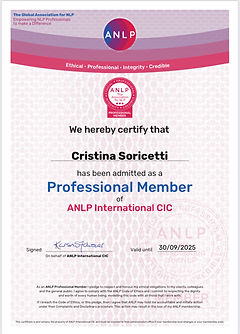


Hypnotherapy
Hypnotherapy, also known as clinical hypnosis, is a therapeutic technique that uses a guided, trance-like state of focus and relaxation to help individuals address various psychological and physical concerns, and make positive changes in their lives.
Here's a more detailed explanation:
What it is:
Hypnotherapy involves a trained professional guiding a client into a state of deep relaxation and focused attention, which is similar to a trance-like state.
How it works:
In this state, individuals become more receptive to suggestions and can access their subconscious mind, allowing for positive changes in thoughts, behaviours, and emotions.
What it can help with:
Hypnotherapy can be used to address a wide range of issues, including:
· Anxiety and stress management
· Phobias
· Habits and addictions: (e.g., smoking, overeating)
· Pain management
· Depression
· Trauma and PTSD
· Insomnia
· Weight loss
· Improving self-esteem and confidence
· Overcoming grief
· Improving motivation
· Releasing emotional trauma
Safety and effectiveness:
Hypnotherapy is considered a safe and effective therapeutic technique when practiced by a qualified and experienced professional.
Scientific recognition:
The American Psychological Association (APA) and American Medical Association have recognized hypnotherapy as a valid procedure.
ALLOW 1 hour $180


Neuro Linguistic Programme
Neuro-Linguistic Programming (NLP) techniques are a collection of tools and strategies designed to improve communication, personal development, and overall well-being. These techniques often focus on how language and patterns of thought influence behavior and emotions. Some common NLP techniques include mirroring, anchoring, reframing, and the Swish pattern.
1. Mirroring: This technique involves subtly matching the body language, tone of voice, and even breathing patterns of the person you're interacting with to build rapport and trust.
2. Anchoring: Anchoring involves associating a specific physical stimulus (like a touch or a word) with a desired emotional state, allowing you to access that emotion more easily in the future.
3. Reframing: Reframing involves changing the way you perceive a situation by shifting your perspective. This can help you find positive aspects or alternative interpretations of events, reducing negative emotional responses.
4. Swish Pattern: This technique is used to replace unwanted thoughts or behaviors with desired ones. It involves visualizing the unwanted image, then quickly replacing it with a more positive and desired image.
NLP practitioners use these tools to help individuals overcome limiting beliefs, improve communication, and achieve their personal and professional goals.
NLP practitioners use these tools to help individuals overcome limiting beliefs, improve communication, and achieve their personal and professional goals.
